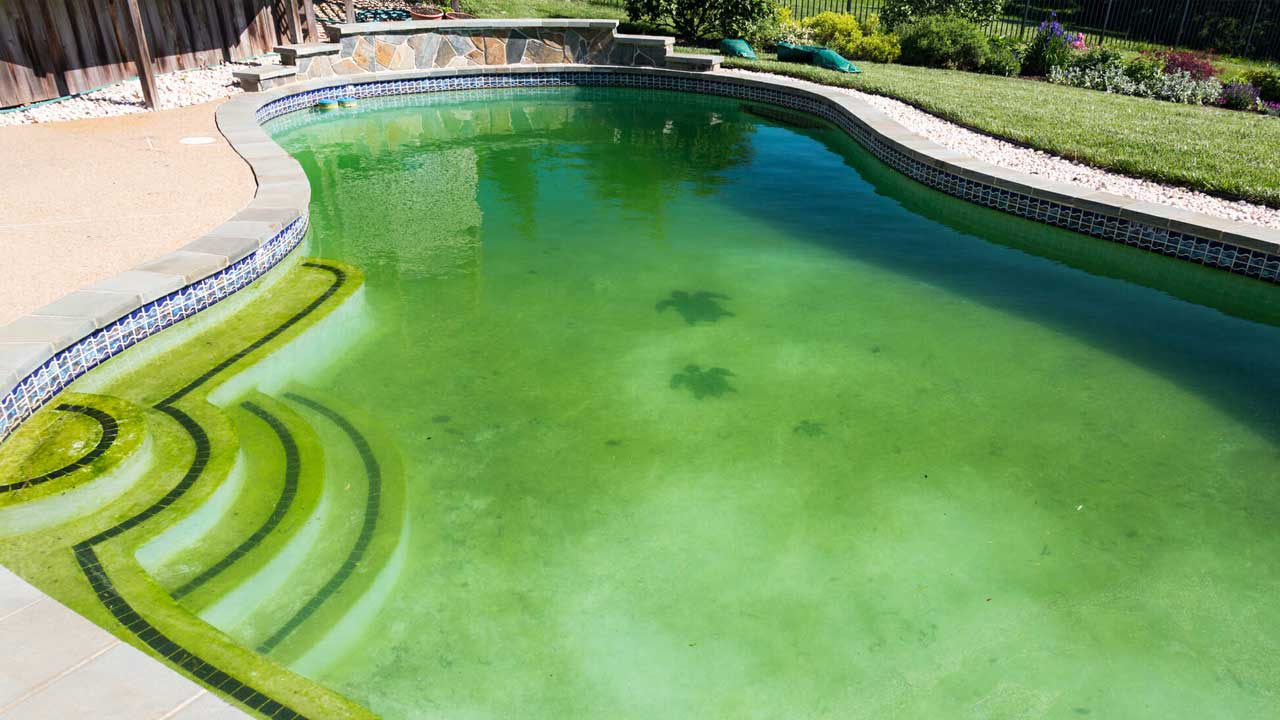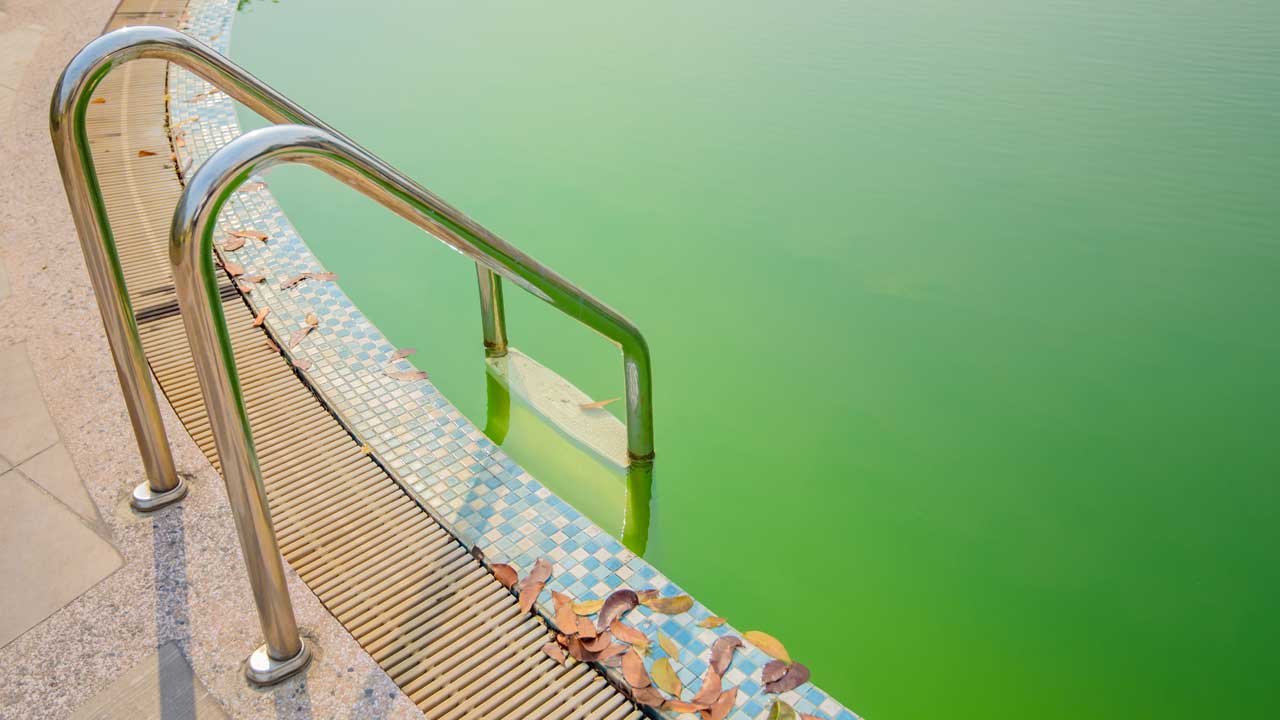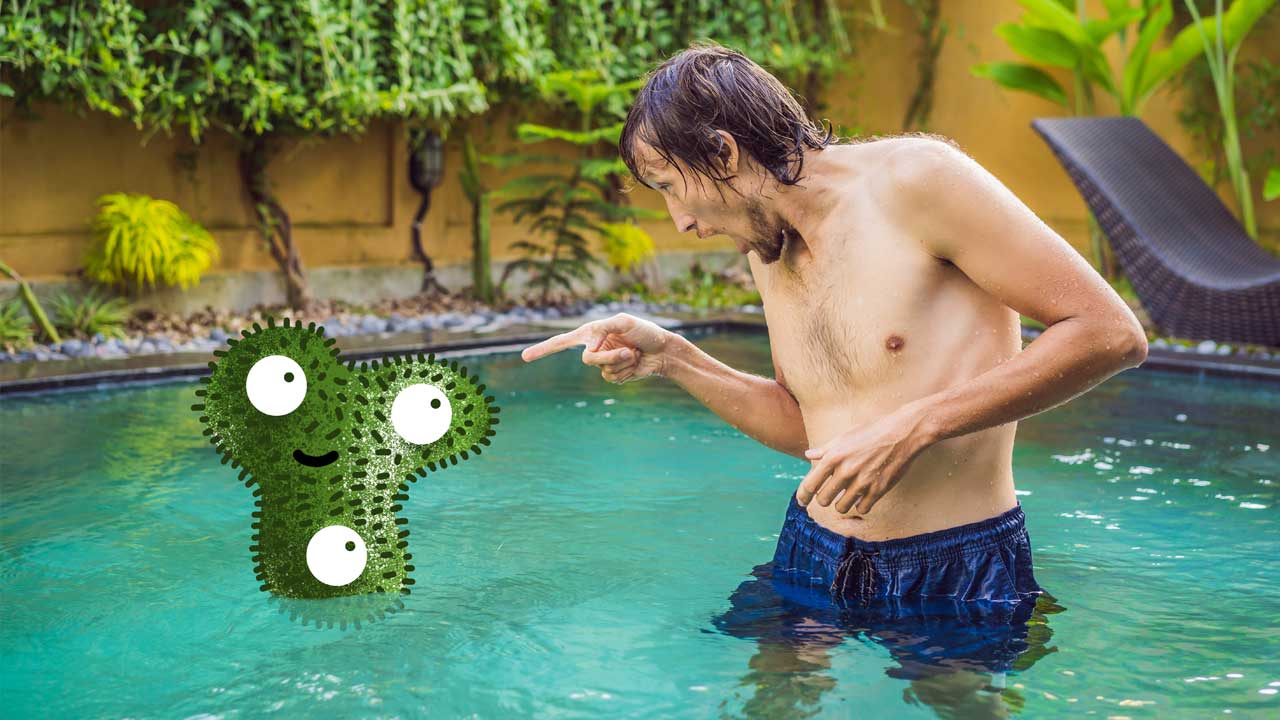
There’s nothing quite like taking a dip in your backyard pool on a hot Phoenix afternoon. But if you’ve ever pulled back your pool cover only to discover murky, green water, you know how frustrating algae can be.
Algae growth is one of the most common problems for pool owners in Arizona’s desert climate. Between the intense sun, high temperatures, and wind-blown debris, your pool can quickly turn from crystal clear to cloudy—or even green—if it’s not properly maintained.
This guide from Aqua Harmony Pools will help you understand why algae forms, how to prevent it, and what to do if you’re dealing with a green pool that needs professional green pool cleaning in Phoenix.

Algae are tiny, plant-like organisms that thrive in warm, nutrient-rich water. In Phoenix, pool conditions are ideal for algae growth, especially during the long, hot summer months.
Here are the top reasons algae take over pools in Arizona:
Even a small imbalance or lapse in maintenance can trigger a full-blown algae outbreak, leaving you with discolored water and slippery surfaces.

Not all algae are the same, and each type requires a different cleaning strategy. Here’s a quick guide to the most common types you might find in your pool:
1. Green Algae
Green algae are the most common and fastest-growing type found in Phoenix pools. They float freely in the water or cling to walls and steps, turning the pool cloudy or bright green.
While it’s relatively easy to treat, green algae can return quickly if your pool chemistry isn’t balanced or your filtration system isn’t working efficiently.
2. Yellow (Mustard) Algae
This type of algae appears as yellow or brown dust-like patches on pool walls, especially in shady areas. Mustard algae are more resistant to chlorine and can survive in pool equipment or swimwear, making it more persistent than green algae.
3. Black Algae
Black algae look like dark blue or black spots that form on pool surfaces, particularly plaster and tile. These algae have strong roots that penetrate deep into the pool’s surface, making them extremely difficult to remove.
4. Pink Algae (Bacteria)
Despite its name, pink algae aren’t actually algae—it’s a type of bacteria that forms slimy, reddish or pink biofilm. It often grows in corners, behind ladders, and around plumbing fixtures.

Prevention is always easier—and cheaper—than dealing with a full algae bloom. Follow these steps to keep your pool clean and algae-free year-round:
1. Maintain Proper Chlorine Levels
Chlorine is your pool’s best defense against algae. In Phoenix, where high heat and sunlight quickly break down chlorine, regular monitoring is essential. Keep chlorine levels between 1 and 3 ppm and shock your pool every 1–2 weeks during summer.
2. Brush and Vacuum Regularly
Algae cling to pool surfaces before spreading. Brushing walls, steps, and corners prevents algae from taking hold. Vacuuming removes debris that can feed algae growth.
If you notice early signs of green tint or slippery walls, increase your brushing and cleaning routine immediately.
3. Balance Pool Chemistry
Unbalanced water chemistry invites algae. Test your water weekly and maintain:
Balanced chemistry ensures chlorine stays active and effective against algae and bacteria.
4. Improve Circulation
Proper circulation keeps pool water moving and distributes chlorine evenly. Run your pool pump at least 8–12 hours a day during the summer. Check that your jets, skimmers, and filters are functioning properly to prevent dead zones where algae can thrive.
5. Clean and Backwash Filters
Your filter plays a crucial role in removing algae spores and debris. Dirty filters can reintroduce algae back into your pool. Clean cartridge filters monthly and backwash sand or DE filters regularly to maintain strong filtration.
6. Shock Your Pool Regularly
Shocking your pool with chlorine eliminates organic contaminants and algae spores that normal chlorination can’t handle. Use pool shock after heavy rain, pool parties, or periods of intense use.
7. Schedule Professional Maintenance
Even with regular cleaning, algae can sometimes sneak in. Partnering with professionals like Aqua Harmony Pools ensures your system stays balanced, efficient, and algae-free. Our expert technicians provide thorough inspections and green pool cleaning in Phoenix to restore your water to perfect clarity.

If your pool has already turned green, don’t panic—it’s a common issue that can be resolved with the right steps.
Here’s what the experts at Aqua Harmony Pools recommend:
If your pool remains cloudy or green after several days, it’s time to call the professionals. Aqua Harmony Pools specializes in green pool cleaning Phoenix homeowners trust for fast, effective results.
When algae take over your pool, DIY solutions often fall short. That’s where Aqua Harmony Pools comes in. We offer:
Whether your pool is slightly cloudy or completely green, our technicians will restore it quickly and safely.
Algae are a natural part of the Arizona environment, but they don’t have to take over your backyard oasis. With consistent maintenance, proper chemical balance, and professional help when needed, you can keep your pool clear and inviting all year long.
If you’re struggling with green or cloudy water, contact Aqua Harmony Pools for expert green pool cleaning in Phoenix. We’ll diagnose the cause, eliminate the algae, and get your pool sparkling clean again—so you can enjoy your outdoor space without the stress.
